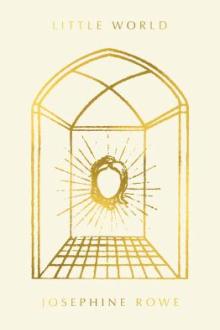ODY New Books Collection
New Books
107 Days
Authored by: Kamala Harris
"For the first time, and with surprising and revealing insights, Kamala Harris tells the story of one of the wildest and most consequential presidential campaigns in American history. Your Secret Service code name is Pioneer. You are the first woman in history to be elected vice president of the United States. On July 21, 2024, your running mate, Joe Biden, announces that he will not be seeking reelection. The presidential election will occur on November 5, 2024. You have 107 days. From the chaos of campaign strategy sessions to the intensity of debate prep under relentless scrutiny and the private moments that rarely make headlines, Kamala Harris offers an unfiltered look at the pressures, triumphs, and heartbreaks of a history-defining race. With behind-the-scenes details and a voice that is both intimate and urgent, this is more than a political memoir -- it's a chronicle of resilience, leadership, and the high stakes of democracy in action. Written with candor, a unique perspective, and the pace of a page-turning novel, 107 Days takes you inside the race for the presidency as no one has ever done before." -- Provided by publisher
World Pacific
A Novel
Authored by: Peter Mann
"A brilliant spy novel and madcap adventure story from the author of The Torqued Man, set in San Francisco and the Asian Pacific during the outbreak of the Second World War. In 1939, the clouds of war are gathering. Richard Halifax-a man of much bravado, master of misadventure, and writer of the breeziest of prose styles-vanishes in the Pacific. Halifax was attempting to sail a Chinese junk from Hong Kong to San Francisco as part of the World's Fair festivities on Treasure Island. But from the moment he is declared dead, his machinations live on, upending the lives of those left in his wake back home. Hildegard Rauch, an émigré painter and the daughter of Germany's greatest living writer in exile, finds her twin brother in a coma after an attempted suicide. He left a mysterious note that sends her on a search for the truth about her brother's relationship with a man named Richard Halifax, and the dangerous secret he entrusted to the writer before his fatal voyage. Simon Faulk, a British intelligence officer and bogus vice-consul, has been assigned to uncover Nazi spies in California. He learns of the arrival of a mysterious agent from across the Pacific, part of a joint-German Japanese operation. The paths of Hildegard and Faulk eventually converge as they follow separate trails that lead to the man assumed to have been lost at sea . . . Told in the alternating voices of these three characters, set against the growing threat of a second World War and the San Francisco World's Fair dedicated to peace, World Pacific is a quixotic, darkly comic tale that explores the many forms of shipwreck and exile, the struggle to fashion a self that can stay afloat, and the stories we tell ourselves as we fight to survive."-- Provided by publisher
Whites
Stories
Authored by: Mark Doten
"The excoriating stories in Mark Doten's brilliant first collection dissect the pathological narratives that shape our culture and country. Narrated by a crosscutting array of White people, Doten's stories spotlight the self-serving logic through which their characters struggle to make sense of, and take control of, the narrative of our time. They run the political spectrum from "well-intentioned" liberals and newly woke CEOs to Trump appointees, QAnon adherents, and believers in replacement theory. There is an anti-vax nursing home employee, an anti-woke billionaire, a nonbinary sneaker podcaster turned January 6 insurrectionist, a nonprofit LA housing president dubbed "WORST KAREN EVER," an elderly Republican in denial of his COVID-19 diagnosis, teenage YouTubers responding to a shooting at their suburban Minnesota school, a demonically possessed cookie manufacturer drafting a BLM statement with his new Black employee, and a gay White supremacist figure who may be a joke on 4chan, but will have his revenge. While their identities and allegiances differ, all of them are united by a ferocious belief in themselves, certain that everything they've done can be justified, if you'll just hear them out. In Whites, Doten has written a relentless book that confirms their standing as one of the great satirists of their generation." -- Provided by publisher
We the People
A History of the U.S. Constitution
Authored by: Jill Lepore
"The U.S. Constitution is among the oldest constitutions in the world but also one of the most difficult to amend. Jill Lepore, Harvard professor of history and law, explains why in We the People, the most original history of the Constitution in decades--and an essential companion to her landmark history of the United States, These Truths. Published on the occasion of the 250th anniversary of the nation's founding--the anniversary, too, of the first state constitutions--We the People offers a wholly new history of the Constitution. 'One of the Constitution's founding purposes was to prevent change,' Lepore writes. 'Another was to allow for change without violence.' Relying on the extraordinary database she has assembled at the Amendments Project, Lepore recounts centuries of attempts, mostly by ordinary Americans, to realize the promise of the Constitution. Yet nearly all those efforts have failed. Although nearly twelve thousand amendments have been introduced in Congress since 1789, and thousands more have been proposed outside its doors, only twenty-seven have ever been ratified. More troubling, the Constitution has not been meaningfully amended since 1971. Without recourse to amendment, she argues, the risk of political violence rises. So does the risk of constitutional change by presidential or judicial fiat. Challenging both the Supreme Court's monopoly on constitutional interpretation and the flawed theory of 'originalism,' Lepore contends in this 'gripping and unfamiliar story of our own past' that the philosophy of amendment is foundational to American constitutionalism. The framers never intended for the Constitution to be preserved, like a butterfly, under glass, Lepore argues, but expected that future generations would be forever tinkering with it, hoping to mend America by amending its Constitution through an orderly deliberative and democratic process. Lepore's remarkable history seeks, too, to rekindle a sense of constitutional possibility. Congressman Jamie Raskin writes that Lepore 'has thrown us a lifeline, a way of seeing the Constitution neither as an authoritarian straightjacket not a foolproof magic amulet but as the arena of fierce, logical, passionate, and often deadly struggle for a more perfect union.' At a time when the Constitution's vulnerability is all too evident, and the risk of political violence all too real, We the People, with its shimmering prose and pioneering research, hints at the prospects for a better constitutional future, an amended America." -- Dust cover flap
We Love You, Bunny
A Novel
Authored by: Mona Awad
"In the cult classic novel Bunny, Samantha Heather Mackey, a lonely outsider student at a highly selective MFA program in New England, was first ostracized and then seduced by a clique of creepy-sweet rich girls who call themselves 'Bunny.' An invitation to the Bunnies' Smut Salon leads Samantha down a dark rabbit hole (pun intended) into the violently surreal world of their off-campus workshops where monstrous creations are conjured with deadly and wondrous consequences. When We Love You, Bunny opens, Sam has just published her first novel to critical acclaim. But at a New England stop on her book tour, her one-time frenemies, furious at the way they've been portrayed, kidnap her. Now a captive audience, it's her (and our) turn to hear the Bunnies' side of the story. One by one, they take turns holding the axe, and recount the birth throes of their unholy alliance, their discovery of their unusual creative powers--and the phantasmagoric adventure of conjuring their first creation. With a bound and gagged Sam, we embark on a wickedly intoxicating journey into the heart of dark academia: a fairy tale slasher that explores the wonder and horror of creation itself. Not to mention the transformative powers of love and friendship, Bunny."-- Provided by publisher
Vulture
[a Novel]
Authored by: Phoebe Greenwood
"An ambitious young journalist, Sara is sent to cover a war from the Beach Hotel in Gaza. The four-star hotel is a global media hub, promising safety and generator-powered Internet, with hotel staff catering tirelessly to the needs of the world's media, even as their own homes and families are under threat. Sara is determined to launch her career as a star correspondent. So, when her fixer Nasser refuses to set up the dangerous story she thinks will win her a front page, she turns instead to Fadi, the youngest member of a powerful militant family. Driven by the demons of her entitled yet damaging childhood, Sara will stop at nothing to prove herself in this war, even if it means bringing disaster upon those around her."-- Provided by publisher
Trip
A Novel
Authored by: Amie Barrodale
"Sandra dies suddenly at a death conference in Nepal attended by academics and mystics. Days later, back in America, her teenage son, Trip, runs away with a man who picks him up on the side of a road. Sandra tries to get a message back to Trip through the mystics, but the mystics are distracted, and her son and the strange man set out to sea. Amie Barrodale's first novel features restless souls, Buddhist deities, divorcées in recovery programs, arguing academics, uncomprehending school principals, and treatment centers for troubled teenagers. It journeys from body to body, through life and death and back again. It tells the story of a mother and son who find other people hard to understand and who are themselves misunderstood. Guiding this wild, unpredictable journey is deep devotion: the desire to save a child and to be a good mother despite it all." -- Amazon
Sunbirth
A Novel
Authored by: An Yu
"From the celebrated author of Ghost Music and Braised Pork, a bewitching and atmospheric novel following two sisters in an isolated village as the sun begins to diminish above them. In Five Poems Lake, a small village surrounded by impenetrable deserts, the sun is slowly disappearing overhead. A young woman keeps one apprehensive eye on the sky above as she tends the pharmacy of traditional medicine that belonged to her great grandfather. She has few customers, and even fewer visitors: her older sister Dong Ji, her last living relative, works at a wellness parlor across town for those who can afford it-which, during these strange and difficult days, is not many. Five Poems Lake had fallen on hard times long before the sun began shrinking, but now, every few days, a new sliver disappears. As the temperature drops and the lake freezes over, the population of the town realizes that they will soon die -- if not of the cold and starvation, then of despair. When the Beacons begin to appear -- ordinary people with heads replaced by searing, blinding light, like miniature suns-the town's residents wonder if they may hold the answer to their salvation, or if they are just another sign of impending ruin. A photograph belonging to their father, who died mysteriously twelve years ago, may offer a clue in the mystery of the Beacons, and Dong Ji and her sister wonder if they may finally learn what happened to their father. With a richly surreal sensibility that has earned comparisons to the work of Haruki Murakami, and anchored by searching curiosity and wisdom, in Sunbirth An Yu honors the unique relationship held between sisters and asks how much we can ever know about the deepest mysteries of the world." -- Provided by publisher
The Second Emancipation
Nkrumah, Pan-Africanism, and Global Blackness at High Tide
Authored by: Howard W. French
Named one of the Most Anticipated Books of 2025 by Foreign Policy "Howard French's The Second Emancipation stands the second half of the last century on its geopolitical head." --David Levering Lewis, winner of the Pulitzer Prize From the acclaimed author of Born in Blackness comes an extraordinary account of Africa's liberation from colonial oppression, a work that fundamentally reshapes our understanding of modern history. A work of epic dimension that recasts the liberation of twentieth-century Africa through the lens of revolutionary leader Kwame Nkrumah.
Schattenfroh
A Requiem
Authored by: Michael Lentz
Translated by Max Lawton ; edited by Matthias Friedrich
"An intricate, metaphysical, ambitious 'psychogeography of the self that both disrupts and elevates the twenty-first century vision of the novel. Our narrator is held in complete darkness and isolation. His endless thoughts are turned into the book we are reading-Schattenfroh-directed by none other than the narrator's mysterious jailer by the same name. Undulating through explorations of Renaissance art, the German reformation, time-defying esoterica, the printing process in the sixteenth century, Kabbalistic mysticism, and beyond, Schattenfroh is a remarkable book that, in turn, asks the remarkable of its readers. Interruptions, breaks, and annotations both buoy and deceive, and endless historical references, literary allusions, and wordplay construct a baroque, encyclopedic quest. Schattenfroh's publication in English marks a seminal moment in the history of the literary form."-- Provided by publisher
Rope
How a Bundle of Twisted Fibers Became the Backbone of Civilization
Authored by: Tim Queeney
"A unique and compelling adventure through the history of rope and its impact on civilization, in the vein of single-subject bestsellers like Salt and Cod Tim Queeney is a sailor who knows more about rope and its importance to humankind than most. In Rope, Queeney takes readers on a ride through the history of rope and the way it weaves itself through the story of civilization. From Magellan's world-circling ships, to the 15th-century fleet of Admiral Zheng He, to Polynesian multihulls with crab claw sails, he shows how without rope, none of their adventurous voyages and discoveries would have been possible. Time traveling, he describes the building of the pyramids, the Roman Coliseum, Hagia Sofia, Notre Dame, the Sultan Hasan Mosque, the Brooklyn Bridge, and countless other constructions that would not have been possible without rope. Not content to just look at rope's past, Queeney looks at its present and possible future and how the re-invention of rope with synthetic fibers will likely provide the strength for cables to support elevators into space. Making the story of rope real for readers, Queeney tells remarkable nautical stories of his own reliance on rope at sea. Rope is history, adventure, and the story of one of the world's most common tools that has made it possible for humans to advance throughout the centuries." -- Provided by publisher
Our Fragile Freedoms
Essays
Authored by: Eric Foner
In this collection of essays and reviews, renowned historian Eric Foner explores the evolving meaning of American freedom and its ongoing struggles. Covering topics from slavery and the Civil War to civil rights and contemporary politics, Foner examines key figures, events, and constitutional issues with clarity and insight. Highlighting how rights can be gained, lost, and must be continually defended, the book underscores the relevance of history in understanding today's political challenges and debates over how the past is remembered and taught.
The Original
A Novel
Authored by: Nell Stevens
Raised on the fringes of her uncle's crumbling Oxfordshire estate, gifted art forger Grace plots her escape until the arrival of a man claiming to be her long-lost cousin forces her to confront shifting boundaries of identity and truth.
On Earth as It Is beneath
Authored by: Ana Paula Maia
Translated by Padma Viswanathan
"In a remote corner of Brazil, life in a forgotten prison takes a sadistic, deadly turn."--Page 4 of cover
The Old Man by the Sea
Authored by: Domenico Starnone
Translated from the Italian by Oonagh Stransky
Domenico Starnone's ,'The Old Man by the Sea' is a slim masterpiece of a novel about an 82-year-old Neapolitan man, Nicola, who has spent his entire life telling stories, becoming very, very good at it. In words, with his pen, in the notebook he carries with him everywhere, he records life's minutiae, its ephemera, those vibrating essences and almost imperceptible atoms of existence that most of us barely notice but that constitute the very stuff of life. Now, ensconced in a house on the dunes south of Rome, Nicola spends his mornings writing, watching the waves, and observing Lu, a store clerk in her twenties whose graceful canoeing stirs faint echoes of his mother--a glamorous, headstrong woman who defied convention with her beauty and creativity. As Nicola reflects on the women who shaped him and the passions he has never outgrown, he finds himself drawn into the nefarious intrigues of the small seaside town and its inhabitants. He will end by embarking on an improbable and ill-advised kayaking adventure of his own with Lu's young son.-- Provided by publisher
No Sense in Wishing
Essays
Authored by: Lawrence Burney
"An essay collection from culture critic Lawrence Burney that is a personal and analytical look at his home city of Baltimore, music from throughout the global Black diaspora, and the traditions that raised him. For fans of Hanif Abdurraqib, Kiese Laymon, and Isaac Fitzgerald. There are moments throughout our lives when we discover an artist, an album, a film, or a cultural artifact that leaves a lasting impression, helping inform how we understand the world, and ourselves, moving forward. In No Sense in Wishing, Lawrence Burney explores these profound interactions with incisive and energizing prose, offering us a personal and critical perspective on the people, places, music, and art that transformed him. In a time when music is spearheading Black Americans' connection with Africans on The Continent, Burney takes trips to cover the bubbling creative scenes in Lagos and Johannesburg that inspire teary-eyed reflections of self and belonging. Seeing his mother perform as the opening act at a Gil Scott-Heron show as a child inspires an essay about parent-child relationships and how personal taste is often inherited. And a Maryland crab feast with family facilitates an assessment of how the Black people in his home state have historically improvised paths for their liberation. Taking us on a journey from the streets of Baltimore to the concert halls of Lagos, No Sense in Wishing is a kaleidoscopic exploration of Burney's search for self. With its gutsy and uncompromising criticism alongside intimate personal storytelling, it's like an album that hits all the right notes, from a promising writer on the rise."-- Provided by publisher
No New Things
A Radically Simple 30-Day Guide to Saving Money, the Planet, and Your Sanity
Authored by: Ashlee Piper
"From award-winning sustainability expert Ashlee Piper, a witty, no-nonsense guide to regaining control over your time, consumerist impulses, and financial and mental wellness. For nearly two years, Ashlee Piper challenged herself to buy nothing new. And in the process, she got out of debt, cut clutter, crushed her goals, and became healthier and happier than ever--all the things she'd always wanted to do but 'never had time to' (because she was mindlessly scrolling, shopping, spending, and stressing). After a decade of fine-tuning, No New Things guides readers through the same revolutionary simple challenge that has helped thousands of global participants find freedom and fulfillment in just thirty days. The book follows the rise of what Piper calls 'conditioned consumerism' and how it sneakily hijacks our time, money, and mental bandwidth, as well as harms the planet. From there, readers follow customizable daily action items that bring about the ease and richness of a life less bogged down by spending and stuff, without compromising on style, convenience, or fun. Whether you're a bona fide shopaholic or someone who just wants to buy less and live more, No New Things is the antidote to modern overwhelm."-- Provided by publisher
Night People
How to Be a DJ in '90s New York City
Authored by: Mark Ronson
"Night People conjures the undeniable magic of the city's bygone nightlife--a time when clubs were diverse, glamorous, and a little lawless, and each night brought a heady mix of music, ambition, danger, delight, and possibility. It's about the beauty of what you can create with just two Technics and a mixer, in a golden era before Giuliani, camera phones, and bottle service upended everything. It's also about a teenager finding his way--stalking DJ Stretch Armstrong and biting his mixes, crate-digging in every corner of New York, grinding gig after gig through a decade of incredible music--and finding a community of people who, in their own strange, cracked ways, lived for the night. Organized around the venues that defined his experience of the downtown scene, Ronson evokes the specific rush of that decade and those spaces--where fashion folks and rappers on the rise danced alongside club kids and 9-to-5'ers--and invites us into the tribe of creatives and partiers who came alive when the sun went down. A heartfelt coming-of-age tale, Night People is the definitive account of '90s New York nightlife and the making of a musical mastermind."-- Provided by publisher
Lost in the Dark
And Other Excursions
Authored by: John Langan
[introduction by Victor LaValle]
"A garishly painted figurine contains a terrible curse; the ten-year anniversary of a sensational horror film shot in an abandoned mine reveals stunning secrets; endnotes for a book review uncover a strange high-tech pathogen; a man witnesses something uncanny and unexplained as his friend succumbs to a watery death; a seasick woman aboard a ferry is pursued by a barnacle-covered specter; a professor reveals the mysterious connection between Joseph Conrad and Peter Pan; a man encounters the ghost of his lost sister in a liminal space between the land and sea; an academic meets a mythical creature on a mysterious island." -- Provided by publisher
Little World
Authored by: Josephine Rowe
"He has no notion of how to care for a saint. Even a small one. Does not even believe... still. Catholic or not. You don't turn away a saint. Little World opens with the body of a child saint stranded in the Australian desert. Her name is unknown, as is the story of her life and the status of her canonization. She arrives in a box made of canoe timber, and Orrin Bird is dressed in his best clothes to receive her. As the novel sweeps across time and place, from the 1950s to the present day, we encounter the lives the saint touches: from the retired engineer who unwittingly becomes her custodian, to a woman driving across the Nullarbor Plain in the mid-1970s with a pair of young lovers, and ending in contemporary Victoria. A haunting reflection on violence and the interdependency of all things, Little World is a dazzling feat by one of Australia's finest writers." -- Cover, page 4





![Vulture : [a novel] / Phoebe Greenwood](/sites/default/files/styles/portrait_2_3/public/media-book-images/image_293f1ee10756224bb32ca4be585d446d.jpg?h=747c0c08&itok=-5Qb6dyY)





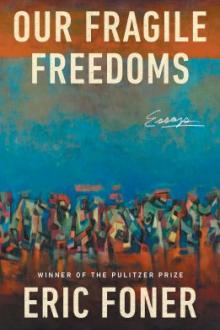
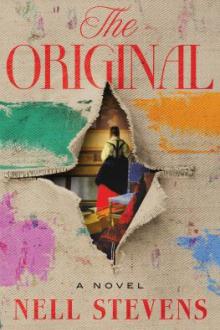

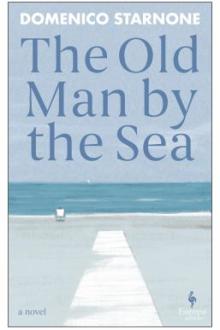
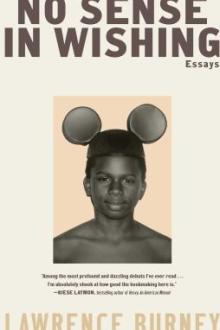
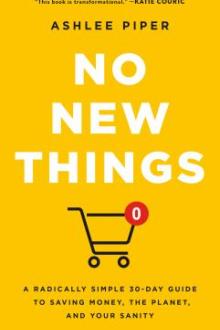
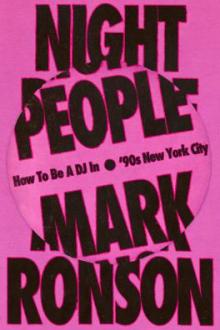
![Lost in the dark : and other excursions / John Langan ; [introduction by Victor LaValle]](/sites/default/files/styles/portrait_2_3/public/media-book-images/image_edd53fbb30562593f71d10b8d239598a.jpg?h=bb366fcc&itok=UN-592Fy)
